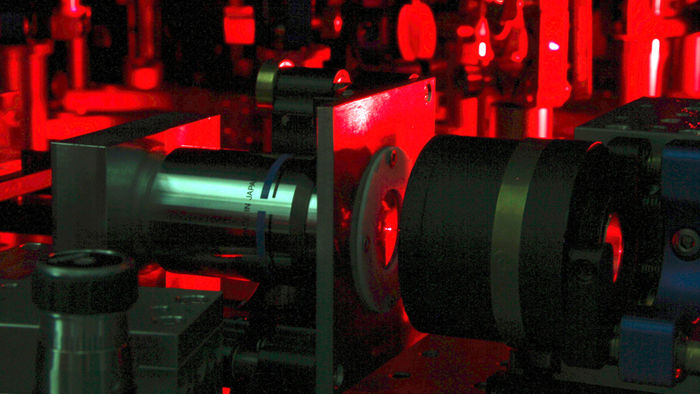10 December 2017
The technique of detecting single molecules has proven its potential in biology, chemistry and material science over the last 25 years, enabling super-resolution microscopy, single particle tracking, detection of rare states, etc. Molecular processes, such as energy transfer and conformational changes are becoming accessible at the ultimate level of the individual molecule. Yet, the fundamental challenge of temporal spectral evolution has remained an obstacle, preventing the racking of any spectral development of such individual molecules at a true molecular timescale.
In a paper recently published in Nature Photonics, Matz Liebel in the research group led by ICREA Prof at ICFO Niek van Hulst, in collaboration with Costanza Toninelli of LENS in Florence, has finally resolved this dilemma by performing time-resolved ultrafast encoded single molecule spectroscopy (TrueSMS). Tracing the femtosecond evolution of excited electronic state spectra of single molecules over hundreds of nanometres of bandwidth at room temperature, they revealed the nonlinear ultrafast response in an effective three-pulse scheme with depleted fluorescence detection. A first excitation pulse was followed by a phase-locked de-excitation pulse pair, providing spectral encoding with 25 fs temporal resolution. Probing the spectral evolution of the stimulated emission transition, initially (<100fs) the electronic band developed, while in the long time-delay (>1ps) spectrum the two-band feature reminiscent of a vibrational progression emerged, confirming the dynamic vibronic transition of the single molecule. This experimental realization of true single-molecule transient spectroscopy demonstrates that two-dimensional electronic spectroscopy of single molecules is experimentally within reach.

True Single Molecule Spectroscopy
Transient absorption spectroscopy of a single molecule in Nature Photonics

TrueSMS (Photo Credit: Matz Liebel | ICFO)











